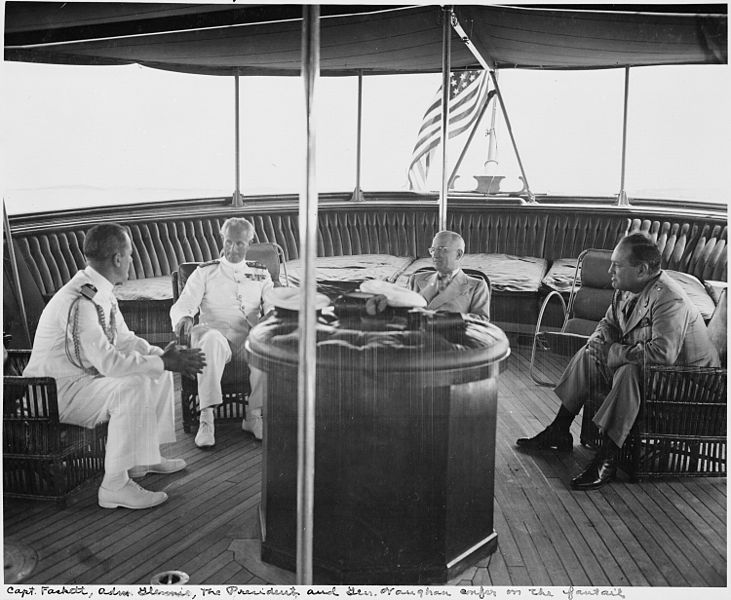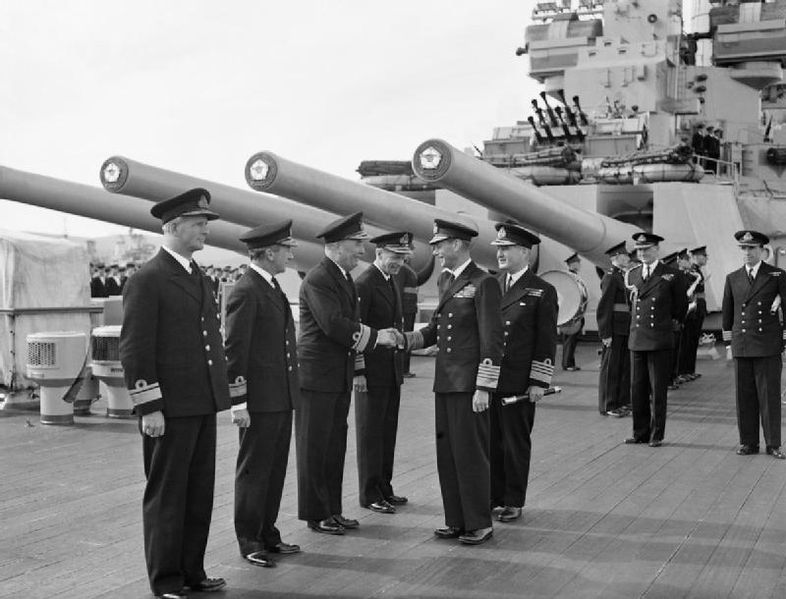<Back to Index>
- Major General of the New Zealand Military Forces Howard Karl Kippenberger, 1897
- Admiral of the Royal Navy Irvine Gordon Glennie, 1892
PAGE SPONSOR
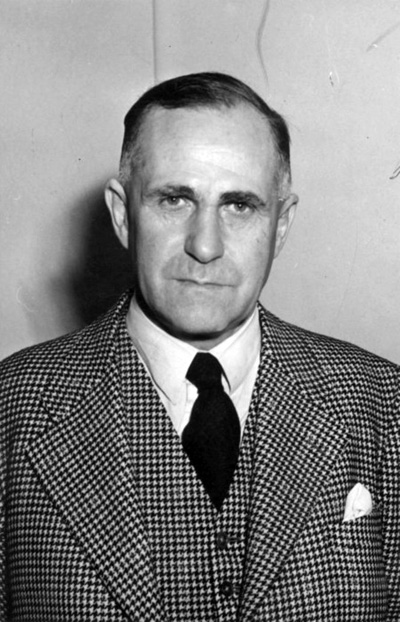
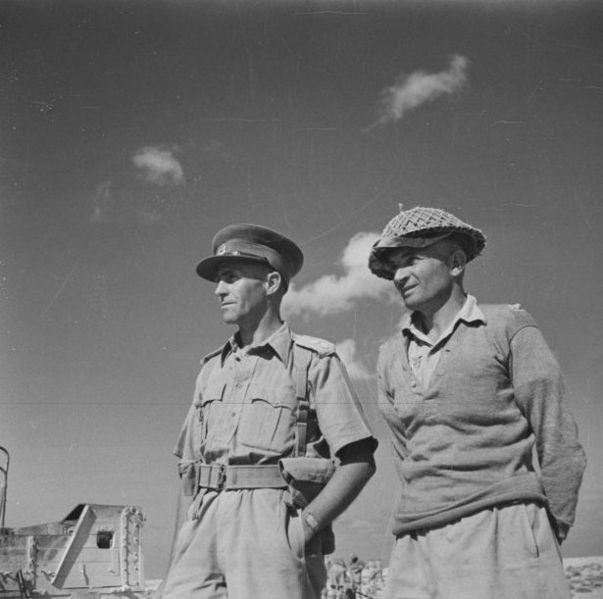
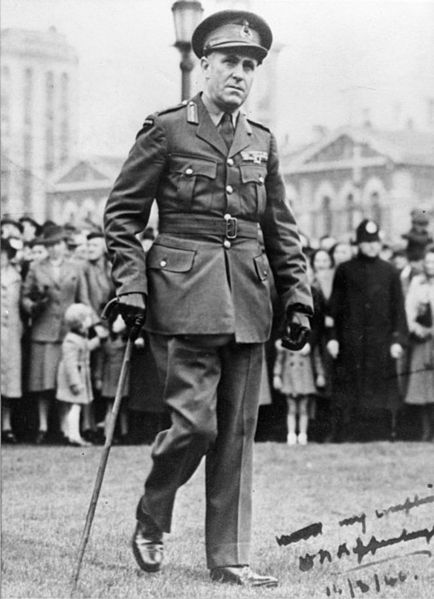
Major General Sir Howard Karl Kippenberger, KBE, CB, DSO, ED, (28 January 1897 - 5 May 1957), known as Kip, was a New Zealand soldier who served in both World Wars. Born in the Canterbury region of New Zealand, he joined the New Zealand Expeditionary Force (NZEF) in late 1915. He saw action in France on the Western Front, participating in the Battle of Flers - Courcelette. A serious wound in November 1916 saw him repatriated to New Zealand and discharged from the NZEF. He qualified as a solicitor in 1920 and worked in a legal practice in Rangiora. He also joined the Territorial Force and advanced in rank to lieutenant colonel.
Following the outbreak of the Second World War, Kippenberger was appointed commander of the 20th Battalion. He would lead the battalion for two years, through the Battles of Greece and Crete as well as part of the North African Campaign before being promoted to brigadier and taking command of 5th Infantry Brigade. The pinnacle of his military career was as commander of 2nd Division during the Italian Campaign. He was wounded on 3 March during the Battle of Cassino when he stepped on a land mine. As a result of his wounds, he lost both his feet. After recovery in England, during which he was fitted with artificial limbs, he helped prepare for and assisted in the repatriation of newly released New Zealand prisoners of war. In 1946, he was appointed Editor in Chief of New Zealand's largest ever publishing project, the Official History of New Zealand in the Second World War. He was still working on the project when he died on 5 May 1957 in Wellington.
Howard Kippenberger was born on 28 January 1897 in Ladbrooks, in the Canterbury region of New Zealand. His unusual surname comes from his paternal great - grandparents, who emigrated to New Zealand from Germany in 1862. Attending local schools (his father was a teacher at one of them) for his early education, when his father became a farmer and moved the family to Oxford, Kippenberger continued his schooling at Christchurch Boys' High School as a boarder. Intellectually advanced for his age, he was not academically challenged at school and misbehaved in class. This, together with a low attendance rate, led to the school authorities asking him to leave high school. Returning home to Oxford, he worked on the family farm.
Always interested in military history, Kippenberger joined the local unit of the New Zealand Cadet Corps and found that he enjoyed soldiering. His father did not approve of his son's interest but regardless, Kippenberger enlisted in the New Zealand Expeditionary Force (NZEF) in late 1915 at the age of 18. Because only men between the ages of 19 and 45 were required to register for service, he falsified his age to ensure that he would be eligible for duty overseas.
From January to April 1916, Kippenberger underwent basic training at Trentham Military Camp as part of the 12th Reinforcement of the NZEF. On 1 May, he embarked for Europe to join the New Zealand Division. However, during transit his transport ship was unexpectedly diverted to Egypt. For two months, his contingent was based at the training camp of the Australian Imperial Force at Tel - el - Kebir but had very little to do with only a few hours of training each day. Twelfth Reinforcement left in July for Sling Camp in England, where it underwent rigorous training of an intensity not previously experienced.
Kippenberger finally arrived on the Western Front in September 1916, as a private in the 1st Canterbury Regiment. His arrival at the front coincided with the Somme Offensive. He took part in the Battle of Flers - Courcelette which began on 15 September. He would remain in the front lines for over three weeks before the regiment was withdrawn. His unit had suffered heavy casualties; Kippenberger was one of just five soldiers left in his platoon after the battle ended.
After rest and recovery, the regiment moved to the Fromelles sector of the front in mid October. Here Kippenberger volunteered for sniper duty despite not being known for his accuracy as a marksman. He served for a time in this capacity until he was badly wounded in the arm by shrapnel on 10 November 1916. Although he would eventually recover from his wound, at the time it was serious enough that he was repatriated to New Zealand and discharged from the NZEF in April 1917.
Kippenberger appreciated the need to establish a career for himself and to this end, decided to study law. In early 1918 he enrolled at Canterbury College to study law and later in the year found a job as a law clerk in a legal practice in Christchurch. Here he met Ruth Isobel Flynn, a secretary, whom he would marry in 1922. The couple would go on to have three children, two sons and a daughter. Working by day, and studying in the evenings, he qualified as a solicitor in 1920. He moved to Rangiora, becoming the manager and then a partner of the Rangiora branch of a Christchurch legal firm.
Kippenberger became immersed in the Rangiora community, serving on the local council and becoming involved in various committees. He also retained an interest in the military and in 1924, joined the Territorial Force. He firmly believed that a large scale conflict would once again occur in Europe, and he wanted to be prepared. Therefore, he built up an extensive military library and studied the theory of warfare and analyzed past campaigns to ascertain strategy and tactics for a given situation. He noted the influence of landscape on the outcomes of battles and the qualities of a successful military commander. He even set up a large sand table in his office at his law practice for war gaming. What he would learn from his studies, he put into practice in his training with the Territorials. By 1936, he was a lieutenant colonel, commanding the 1st Battalion of the Canterbury Regiment.
On the outbreak of the Second World War in 1939, Kippenberger was given command of 20th Battalion. Formed at Burnham Military Camp in early October, the battalion was to be part of the 2nd New Zealand Division. After a period of training, it departed for the Middle East on 5 January 1940. The battalion arrived at its base in Maadi, Egypt, on 14 February, and would be involved in training and garrison duty at Baggush for most of the next 12 months.
On appreciating the prospect of an invasion of Greece by the Germans in 1941, it was decided by the British Government to send troops to support the Greeks. The 2nd New Zealand Division, under the command of Major General Bernard Freyberg, was among the various Allied units dispatched to Greece in early March. As part of the 4th Infantry Brigade, 20 Battalion prepared and manned the western edge of the Aliakmon Line, a position Kippenberger was not particularly happy with. He felt the defensive line allocated to his battalion was too wide to meaningfully defend, and he took care to reconnoiter avenues of retreat from his positions. On 6 April, the expected German invasion began and they advanced so rapidly a threat to Florina Gap became apparent. The 4th Infantry Brigade, in danger of being outflanked, was withdrawn to the Servia Pass where it manned defensive positions much superior to its previous positions.
Actual battle with the German forces commenced on 14 April and the brigade defended his positions for three days before being withdrawn. Kippenberger's battalion was to be the rearguard and he personally intervened in the demolition of Servia Pass to ensure that as many stragglers as possible were collected. The resulting delays meant that he and his demolition party came under artillery and tank fire as they attempted to catch up with the main body of the brigade. He and some of his party were forced to abandon their vehicles and rejoin the battalion on foot. After conducting further delaying actions on the road leading into Athens, Kippenberger and his command was evacuated to Crete on 28 April.
On Crete, Kippenberger was promoted to temporary colonel and given command of 10 Brigade, an adhoc formation, which included a 750 man composite battalion consisting mainly of artillery and Army Service Corp men (sans their heavy equipment), New Zealand Divisional Cavalry, some machine gunners and two Greek regiments (although Kippenberger assessed the Greek units to be of limited use). His 20th Battalion was also part of the brigade but strict controls were in place around its deployment and use.
When the Germans launched the invasion of Crete on 20 May, Kippenberger, like most of the defenders of the island, was surprised at the sight of hundreds of Fallschirmjäger (paratroopers) descending under parachutes. He quickly recovered and made his way to his headquarters, although he was injured en route as a result of contact with a paratrooper. His brigade was positioned east of Maleme airfield, on the Galatas plains, and well positioned to counterattack scattered paratroopers beginning to reform into a good starting position from which an attack on the airfield could be launched. His request to do so was denied by the acting divisional commander, Brigadier Edward Puttick. An attack launched later without Kippenberger's knowledge failed, although he believed the outcome could have been different if his troops had been involved.
For most of the remaining days of the battle, a series of attacks and counterattacks were launched. The 10th Brigade had been made subordinate to 4th Infantry Brigade, although Kippnberger remained in command of the forward troops of the brigade around the town of Galatas. For the next few days, he was instrumental in maintaining defensive discipline of the forward troops, most of whom were not trained infantry. When Galatas fell to the Germans on 25 May, he quickly planned, led and executed a successful counterattack to recapture the town. Despite this notable success, it was short lived as the brigade had to withdraw to a shorter defensive line and the town was abandoned. Kippenberger joined up with 20th Battalion as it gradually retreated to Sphakia, on the south coast of the island, from where it was to be evacuated to Egypt. Much to his distress, on arrival at Sphakia he was forced to select a number of his men to remain as a rearguard while the rest of the battalion was evacuated on 30 May. Much to his pleasure, the rearguard that he thought he had had to abandon on Crete was able to follow the next day.
As a result of his actions in Greece and Crete, Kippenberger had forged a reputation for himself as one of the leading officers of 2nd Division. His brigade commander, Puttick, recommended him for leadership of an infantry brigade although for the time being he would remain commander of 20th Battalion. Later in the year, he would be awarded a Distinguished Service Order for his leadership during the Battle of Crete.
Back in Egypt, and after a short period of rest, Kippenberger set about rebuilding the battalion, which had lost over half its original complement. Nearly 400 replacements joined the battalion and stragglers continued to arrive for several weeks as they made their way across the Mediterranean in small sailboats. By mid June, it was back up to strength. Several weeks were spent at the battalion's previous positions at Baggush, engaged in intensive desert training.
In November 1941, the 2nd Division participated in Operation Crusader and was engaged in offensive operations towards the Sidi Azeiz area. Kippenberger enjoyed early successes in this campaign, with his battalion engaged in several local battles. At one stage, he responded to an attack in the battalion's rear with a frontal assault resulting in the capture of 300 prisoners. Later on the night of 25 November, along with 18th Battalion, he was tasked with the night time capture of Belhamed, a hill adjacent to Sidi Rezegh. As the units moved to its positions, he made a navigational error which resulted in his headquarters company becoming separated from the other companies of the battalion. It took him until daylight for him to reestablish contact with the remainder of the battalion which, when he located it, was in its expected position having taken the hill with few losses. As he assessed the situation and failing to take care to avoid unduly exposing himself, he was wounded by machine gun fire. Evacuated to a dressing station, he was captured by elements of the 15th Panzer Division three days later. Still on Belhamed, the 20th Battalion was destroyed in a counterattack, an action observed by a distressed Kippenberger through field glasses.
The dressing station was now under the guard of Italians. Kippenberger decided to attempt an escape from captivity and on 4 December, with a party of 20 others, he was able to discretely abscond with a truck. Making his way back to Baggush, he ran into a group of armored cars which forced the truck to a stop. To his relief, the armored cars proved to be those of a South African unit. On reaching Baggush, he convinced his superiors to send a unit to the dressing station to rescue the remaining prisoners. Freyberg promoted him to brigadier and informed him that he was to take over 5th Infantry Brigade. For his work during the campaign, Kippenberger was mentioned in dispatches.
The 5th Brigade consisted of the 21st, 22nd and 23nd Battalions. With the Maori Battalion frequently attached to his command, the brigade numbered 5,000 personnel. It was regarded as a substandard formation by the other brigades of the division, and Kippenberger set about rectifying this. While the rest of 2nd Division moved to Syria, he and his brigade remained in Baggush, and stolidly worked on its defenses for several months. In April, the brigade moved to Syria to complete the 2nd Division once more.
It was only here for two months before Panzer Army Afrika attacked into Libya, prompting the recall of 2nd Division. Defeated at the Battle of Gazala, the Eighth Army retreated into Egypt. The recalled New Zealanders manned a defensive position at Minqar Qaim, and rebuffed several attacks. However, it was not long before the division was cut off. It was successfully forced a breakout with minimal losses on 27 June and withdrew to new positions at El Alamein. On 14 July 1942, during the First Battle of El Alamein, Kippenberger led the 5th Brigade in what would be known as the Battle of Ruweisat Ridge. Ruweisat Ridge was held by the enemy and was in the center of the El Alamein line, dominating the surrounding area. 5th Brigade was tasked with the capture of the center of the ridge. 4th Brigade was to take the western end of the ridge and the 5th Indian Brigade the eastern end. British armor, in the form of two armored brigades, was to protect the flanks and be in support to deal with the expected counterattack. However, little thought was given to communication and liaison between the infantry and armored brigades, nor was a clear chain of command established. This would have implications for the outcome of the battle.
Kippenberger's attack required a night time advance of six miles across a 1000 yard wide front. He decided to have two battalions, the 21st and 23nd Battalions advance across this front, with the 22nd Battalion in reserve. Artillery and anti - tank units would follow at daybreak. However, he not only decided to use unreliable short range radios but also failed to make it clear to the inexperienced commander of 21st Battalion that it was not expected to cover the whole frontal advance. In making the advance, the elements of the battalion was spread so far apart that they lost cohesion and bypassed numerous strong points, leaving the German line in front of the ridge largely intact.
In the morning, the supporting British armor was nowhere to be seen and the artillery and anti - tank units were unable to break through, leaving the two New Zealand brigades in position on the exposed ridge. Kippenberger inspected the brigade's position and found his battalions under fire from German tanks. Unable to contact nearby units by radio and realizing the degree to which his men were exposed, he raced off under fire in a bren carrier to locate the British armor. Coming across an armored brigade four miles away, he implored its commander to bring his unit forward but was refused meaningful support until the intervention of a passing general. By the time the tanks had arrived, the men of 22nd Battalion had been largely killed or captured and heavy casualties incurred among 23rd Battalion. By nightfall, the 4th Brigade had been overrun, and Kippenberger asked for and received permission to withdraw his brigade from the ridge. Although awarded a bar to his DSO for his dash for help from the British, Kippenberger was bitter about the poor planning of the operation and admitted his own errors of judgement.
On the opening day of the Second Battle of El Alamein, Kippenberger led his brigade, which had spent much of the previous weeks in defensive lines, in an attack on Miteirya Ridge during which it achieved all of its objectives. In contrast to three months earlier at Ruweisat Ridge, he took care to establish his headquarters as forward as possible prior to the commencement of the battle to minimize communication difficulties with the units of the brigade. Despite this, he still lost contact with the leading 23rd Battalion which quickly overwhelmed its opposition and advanced so quickly that it arrived at its final objective so far ahead of schedule that it believed it had only reached its first objective and so advanced even further. The battalion's commander blamed his unit's eagerness for a rapid advance on Kippenberger's inspirational prebattle speech which particularly enthused his men.
As the Afrika Korps retreated into Libya and Tunisia, 2nd Division, as part of X Corps was in pursuit. A series of engagements with the enemy followed, occupying Kippenberger and his men. Following the battle at Takrouna, 5th Brigade was relieved having loss 38% of its strength. He remained a highly regarded officer, deputizing as commander of 2nd Division in Freyberg's occasional absence from the field in higher commands.
By July 1943, it was decided to send a group of 6,000 long serving veterans of the NZEF to New Zealand for three months leave. For Kippenberger, the ranking officer of the group, and with a high public profile due to his exploits in Crete and North Africa, much of his leave was spent in extensive speaking engagements. He was so rundown by the date of his scheduled departure in September for Egypt, he had taken seriously ill. It was not until November that he was well enough to return to command of 5th Brigade.
At this stage of the war, 2nd Division was in Italy with 5th Brigade poised to attack across the Sangro River in central Italy. On his arrival, Kippenberger conducted a survey of the terrain and recommended to Freyberg that the attack plan be modified to include an additional brigade, a recommendation Freyberg concurred with. The reorganized attack was successfully executed on the evening of 26 November with light casualties. The 2nd Division then moved onto the town of Orsogna but all three assaults on the town would be repelled. The second attack on the town of 7 December was the first to involve 5th Brigade. It failed, despite Kippenberger's brigade achieving all its objectives on the flank of the town. The failure of another brigade, tasked with capture of Orsogna itself, to achieve its goals left elements of the 5th Brigade exposed, and it had to partially withdraw.
A further attack mounted on 14 December, and primarily involving 5th Brigade also failed, despite armored support. Kippnberger was finding the close fighting in the mountainous terrain in Italy to be in marked contrast to the open campaign of the deserts of North Africa. He was also beginning to become worn down with the strain of battle and the attempts on Orsogna had led to the death of a close friend. When his corps commander, Miles Dempsey, ordered what Kippenberger regarded to be wasteful attacks on ground in front of 5th Brigade, he was not pleased and voiced his concerns twice.
In early 1944, Freyberg had been made commander of the New Zealand Corps, newly formed for the Battle of Monte Cassino. Kippenberger was promoted to temporary major general and made commander of 2nd Division. This was to be the pinnacle of his military career. The division had moved into the lines around Cassino. The German defenses were robust and strongly defended and had rebuffed several attacks mounted by United States forces. A first attack by the New Zealanders on 17 February was likewise unsuccessful despite the bombing of the Monte Cassino abbey, which Kippenberger supported. A second attack was planned for 20 February, but it was delayed. On 2 March Kippenberger, wanting to gain an overview of the Cassino battlefield, climbed the slopes of nearby Mount Trocchio. Near the top, he stepped on a land mine. The blast destroyed one foot entirely. He was evacuated to a medical center, where his other foot had to be amputated. When the news of his injuries spread to the men of 2nd Division, it was met with some disbelief and shock, greatly affecting morale.
In April, Kippenberger was transferred to Queen Mary's Hospital in London to be fitted with artificial limbs. After a four month period of convalescence, he was discharged from hospital in early September. That same month, his wartime services were recognized by being made a Commander of the British Empire and in December he was appointed a Companion of the Order of the Bath.
Graded by a medical board as only being fit for administrative duties, he still harbored hopes of returning to the 2nd Division. However, he was named to replace Brigadier James Hargest, who had been killed in France in August, as commander of the New Zealand Reception Group. This was an organization formed to deal with the housing and welfare of the expected influx of New Zealand military personnel newly released from prisoner of war camps in Germany. These personnel were to be evacuated to England to await repatriation to New Zealand. It was recognized that transition from the harsh life as a captive to normal life may be difficult for some, and the Reception Group provided much needed support and medical care. He threw himself into his new role, setting up facilities and accommodation centers around Dover. The first former prisoners of war began arriving in late March 1945, and Kippenberger made it a point to personally meet with each group of arrivals. By the following October, the overwhelming majority of released New Zealand personnel had been returned to New Zealand, negating the need for the Reception Group.
In 1945, Kippenberger was offered the position of Editor - in - Chief of New Zealand's largest ever publishing project, the Official History of New Zealand in the Second World War. The New Zealand government had made initial plans for a published record of New Zealand's involvement in the war as early as 1943. Kippenberger, well respected across all branches of New Zealand's services, was championed by New Zealand's prime minister Peter Fraser as the person to coordinate the project. The resulting series of books was to be published by the War History Branch at the Department of Internal Affairs. By 1946, his work with the Reception Group was largely complete and he returned to New Zealand to take up his new position. Initially contracted for seven years from 1 July 1946, he would be involved with the project for the rest of his life. In his capacity as Editor - in - Chief, he guided the planning and production of volumes dedicated to specific campaigns, units and the war effort in general. Following a change in government he had to fight increasing budget and staff cuts, but by 1963 the War History Branch he had presided over for much of its life had produced 50 major volumes.
Kippenberger also found the time to write his own book, Infantry Brigadier, an account of his war time service. It was a work that began in 1944, as he worked with the Reception Group and it was largely complete by late 1946. Published in 1949 by Oxford University Press, it proved to be a critical and commercial success and was translated into seven languages.
In 1948, Kippenberger was knighted. He was also elected Dominion President of the Royal New Zealand Returned and Services' Association (RSA), a position he would hold until 1955. While serving as RSA president, he courted controversy by his outspoken opposition to the All Black tour of South Africa in 1949, on the basis of the exclusion of Maori players from the team. While forced to apologize for his remarks, he received much support from Maori veterans.
In April 1957, his wife's health deteriorated and she was hospitalized. Although seriously ill, she recovered sufficiently to be moved home. On 4 May 1957, while preparing for his wife's homecoming, Kippenberger complained of a headache and then collapsed. Taken to hospital in a coma, he died the next day of a cerebral hemorrhage. He was buried at Karori Cemetery in Wellington with full military honors.
After his death, Kippenberger's extensive library was purchased by the New Zealand Army. He was a keen reader of military studies, annotating many of the books in the margins as he read them. His notes gives an insight into his thinking on warfare and strategy. His collection is housed in the Kippenberger Research Library, in the QEII Army Memorial Museum, Waiouru, together with other books covering a wide range of military subjects, with an emphasis on all major wars involving New Zealanders.
In 2006 the Victoria University of Wellington announced the creation of the Sir Howard Kippenberger Chair in Strategic Studies. It receives support from the Garfield Weston Foundation and provides support for the holder of the chair to conduct research into strategic studies as well as teaching of undergraduate students. The New Zealand Army operates what is known as the Kippenberger Scheme. It allows officer cadets based at Linton Military Camp, near Palmerston North, the chance to study at Massey University before becoming commissioned.
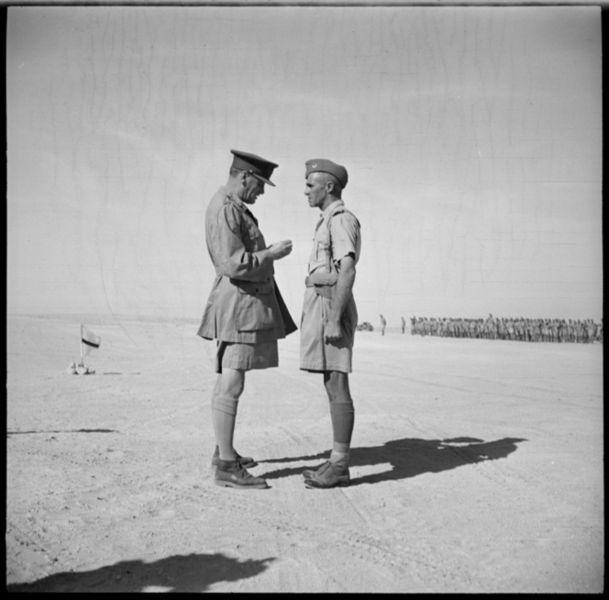
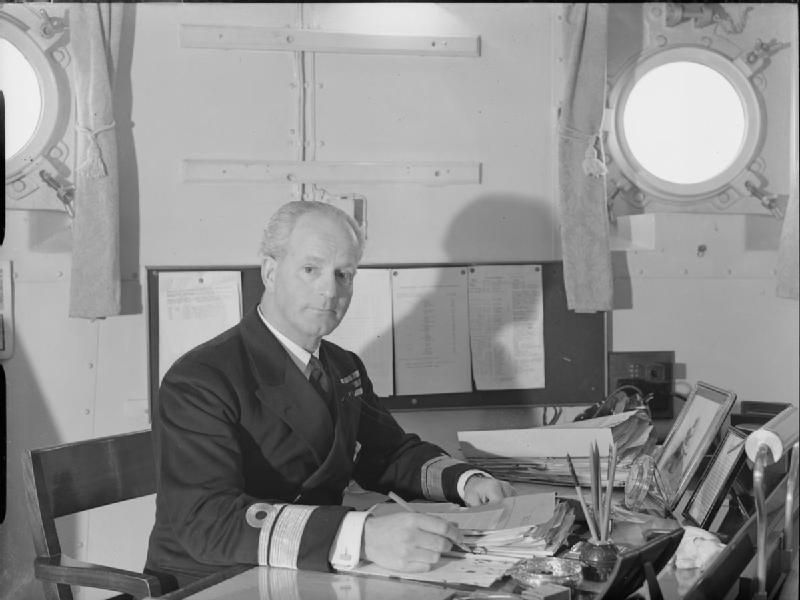
Admiral Sir Irvine Gordon Glennie KCB (22 July 1892 – 8 September 1980) was a Royal Navy officer who went on to be Commander - in - Chief, America and West Indies Station.
Educated at the Royal Naval College, Osborne, and the Royal Naval College, Dartmouth, Glennie joined the Royal Navy in 1905 and served in World War I in the Home Fleet and in the Grand Fleet. He joined the Staff at the Royal Naval College, Dartmouth, in 1922 and then commanded Destroyers from 1925. He was appointed Flag Captain commanding HMNZS Achilles and Chief of Staff to the Commander - in - Chief of the New Zealand Division in 1936 before becoming Commander - in - Chief of the New Zealand Division in 1938.
He also served in World War II as Flag Captain commanding HMS Hood and Chief of Staff of the Battle Cruiser Squadron from 1939; it was in this capacity that he took part in the Attack on Mers - el - Kébir in July 1940. He then served as Commander of Destroyers in the Mediterranean Fleet from 1941, taking part in the Battle of Crete and preventing Axis troops from landing on that island in May 1941, before becoming Commander of Destroyers in the Home Fleet from 1943. He was made Senior Naval Officer, Western Atlantic, from 1944; this role evolved into Commander - in - Chief, America and West Indies Station in 1945. He welcomed President Harry S. Truman to Bermuda after the War and retired in 1947.
He died in 1980 at Lymington in Hampshire.
